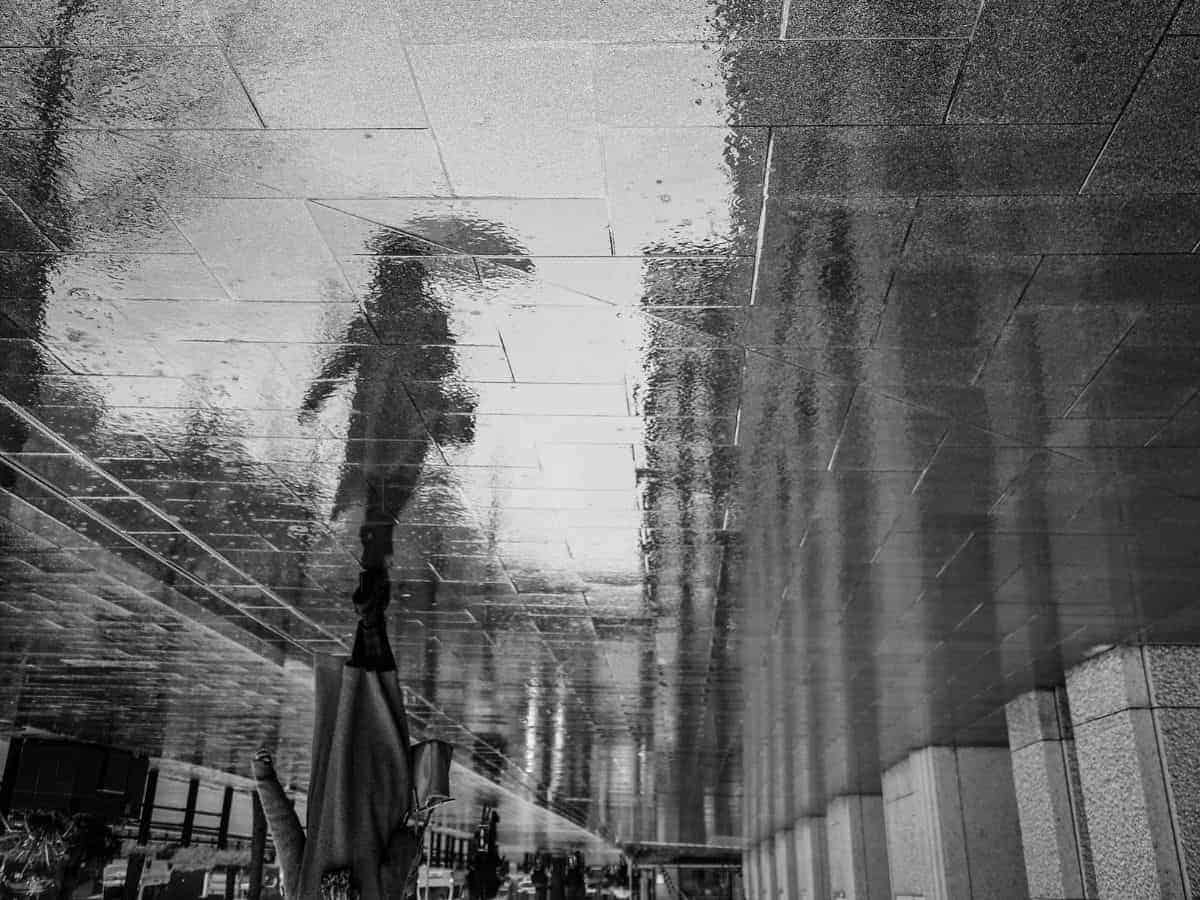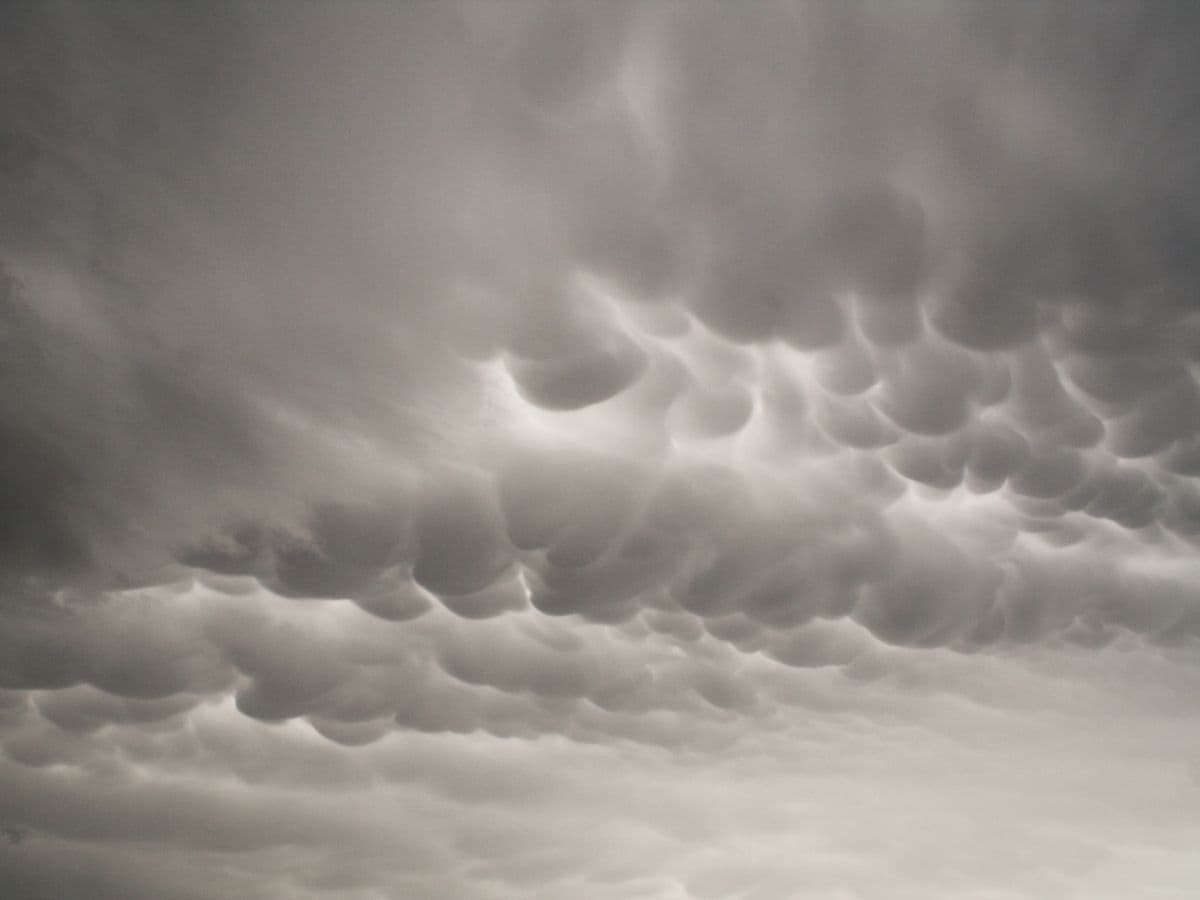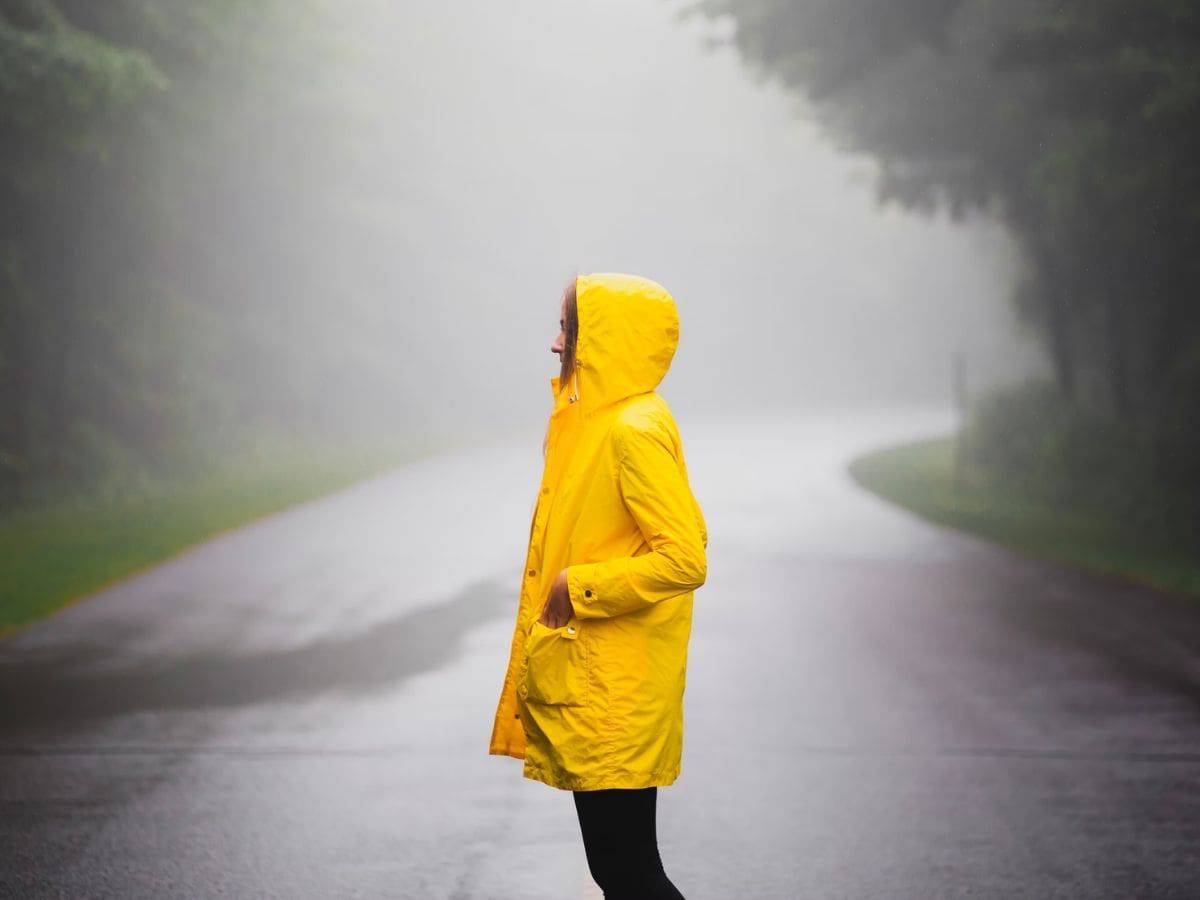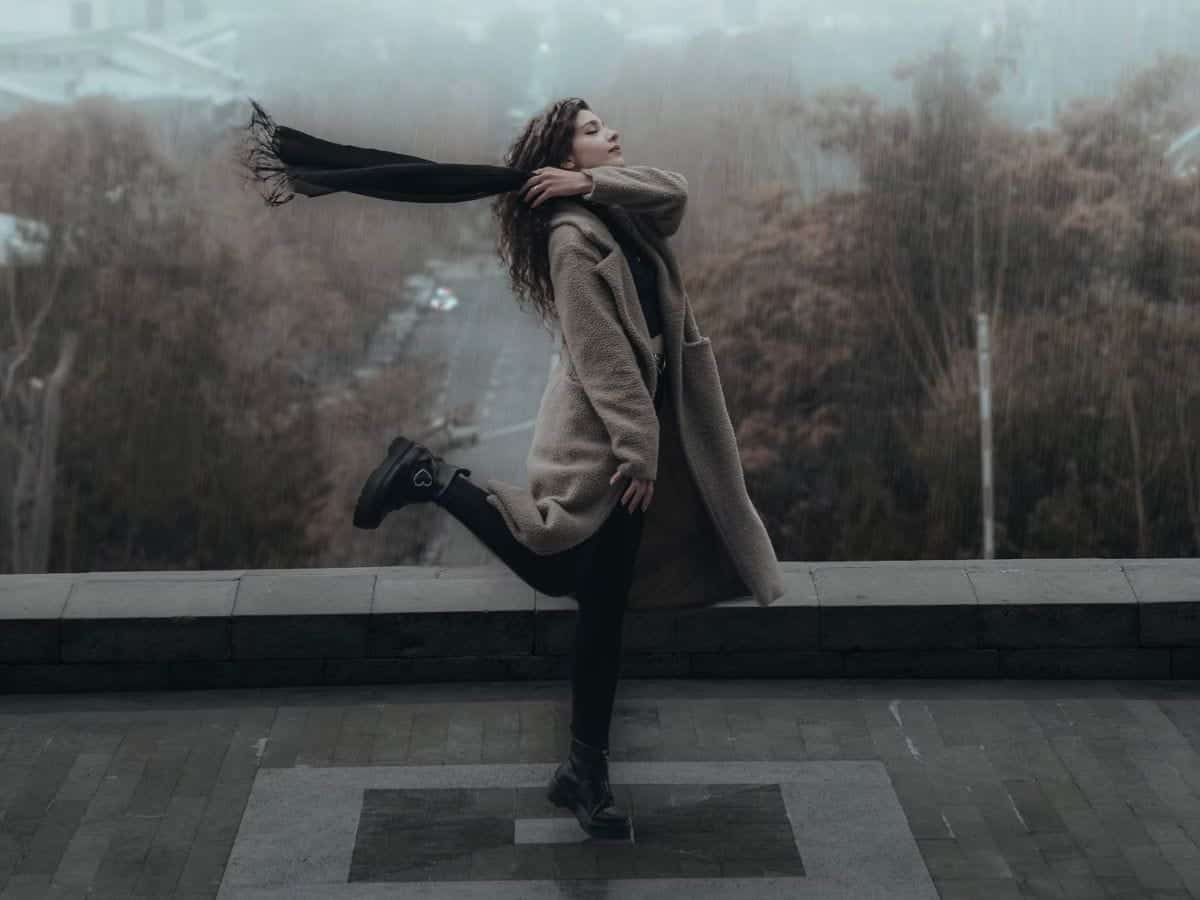Cloudy days and overcast weather may not seem inviting, but it’s an excellent time for photos. Learn perfect cloudy day photography.

Look at cloudy or rainy days as an opportunity rather than letting them get in the way of capturing amazing images.
Related: How to take amazing group photos
Sure, bright and sunny days are fun and filled with light. However, overcast days are beneficial, and you can take plenty of incredible images.
The key is learning how to shoot when the sun’s hiding.
Related: How to write a photography mission statement
The following are the best and most essential cloudy day photography tips to remember for your next photo shoot.
1. Use the right camera settings
Cloudy days are darker, so you need to adjust your camera settings. The most important settings are the ones that affect exposure and white balance.
Related: The difference between vibrance and saturation
For the white balance, use the camera’s preset for cloudy days or manually set the Kelvin.
If you go with the manual route, overcast days typically require the camera to be set at 6500K. So, start there and make the necessary adjustments.
Aside from the white balance, a great cloudy day photo must be well-exposed. The following are the most important factors and recommended settings:
- Aperture: Use the widest aperture possible to maximize the amount of light that enters the lens. A wide aperture means a shallow depth of field. So, go as wide as possible while still getting the shot you want.
- Shutter speed: Slow shutter speeds lead to brighter images. Typically, 1/125 to 1/250 are good shutter speeds to prevent motion blur while brightening the photo.
- ISO: Use the lowest ISO possible to take a well-exposed photo. Depending on how dark it is, set it between ISO 200 and ISO 800. Remember, higher ISOs can result in a grainy photo. So, increase it carefully.
With the appropriate camera settings, you can shoot well-exposed images even during an overcast day. Also, you can brighten the image in post-processing.
2. Use the sky as a giant softbox

When you’re shooting portraits during a bright, sunny day and want soft light, you have to diffuse the light or find shade. While you can shoot in harsh light, it’s not the most flattering.
During an overcast day, the clouds act as a massive softbox. So, you’ll have soft light everywhere.
You may see the sun shining through in some spots, but the clouds do an excellent job at diffusing light.
It’s easy to evenly light your subject’s face and capture flattering photos.
Related: 10 best apps to fix blurry photos
3. Shoot from above eye level

On cloudy days, there’s less available light. Less light makes it more difficult to illuminate your subject’s eyes. So, shoot from above eye level.
Your subject will be looking slightly upward, which allows you to capture catchlights in their eyes.
Catchlights are the key to striking portraits. When your subject’s eyes are filled with light, it brings out the color and makes them look full of life.
If you’re shooting portraits of someone taller than you, bring a stool or find ways to get your camera higher than eye level.
4. Focus on the background, not the sky
Unique and dark clouds can be interesting backgrounds. If the sky is grey without much depth in the clouds, it’ll look flat in an image. Often, the sky will get blown out.
So, consider leaving it out. Instead, look for unique backgrounds and environments to take the portraits.
Since the clouds provide diffused lighting, you can focus on good composition and setting the scene. Several excellent options are trees, nature, buildings, lights, and bokeh.
Along with the different backgrounds, experiment with angles and perspectives.
5. Capture reflections

Reflection photos are unique, creative, and takes time to find the perfect angle. When done well, you’ll capture mesmerizing reflections.
There are many opportunities for capturing reflections. Bodies of water and reflective surfaces are the most common. If it rained, puddles are easy to find.
With reflection portraits, you can capture full-body or half-body photos, along with headshots.
Reflections can also be used as a source of light. One of the best ways is to place your subject near a reflective building or wall.
6. Use artificial light
Off-camera flash is an excellent solution for cloudy day photography. You can use continuous light or flashes.
It allows you to properly expose your subject while capturing the dark and moody backgrounds that clouds offer.
Another way to use artificial light is to shoot with backlighting instead of front lighting.
You can place an external flash on a stand behind your subject and set it to a warm tone, between 4000K and 4500K.
When you snap the photo, it’ll create a beautiful and warm backlight.
If it’s raining, you’ll be able to see the raindrops if the background is dark.
Artificial light is an excellent way to get creative and illuminate your subject during cloudy days.
7. Look for interesting clouds

Clouds can be interesting backgrounds or as an element of the image. So, look for unique clouds. Find interesting shapes, textures, and shadows.
During your shoot, you may find times where the sun is shining through the clouds, or there’s a light pool. Be patient and you’ll see eye-catching cloud formations.
While you’re focusing on the clouds behind your subject, make sure there’s light from the front to illuminate your subject.
When you combine a unique cloudy background with a well-exposed subject with catchlights, you get an incredible portrait.
8. Add a pop of color

The grey skies can make an image feel dull. So, add a pop of color.
The easiest way is to have your subject wear a brightly colored piece of clothing.
It can be a shirt, jacket, pants, or a hat. Under the clouds, the color will stand out and immediately draw a viewer’s eyes to your subject.
Another way to add a pop of color is to use a prop. Whether it’s something that your subject holds or sits on, make sure it’s a color that stands out.
When it’s cloudy, adding a pop of color is the best way to capture an interesting photo.
9. Use shadows to create drama
Shadows add dimension and direction. While cloudy day photography may not have intense shadows like a sunny day, you can still capture creative photos.
An overcast day can provide soft and even lighting. Clouds can also lead to a dark and moody image.
Embrace the shadows to capture a dramatic photo.
Moody photos evoke an emotional response of mystery from the viewer. It’s a style of photography that thrives during cloudy days.
10. Capture movement

A great way to do creative cloudy day photography is to capture movement.
You can use a fast shutter speed to freeze movement or a slow shutter speed to blur it. Both ways make any cloudy day image look more creative and interesting.
Movement creates eye-catching photos. It provides a sense of dynamism, energy and helps the viewer form a story of what’s going on.
Related: Low-angle shot: Why and how it’s used
11. Edit in black and white

Cloudy day photography has many opportunities, but you may have images that look dull and flat. Before you delete them, try removing the colors.
Edit the image in black and white, and immediately, you’ll watch it become more dramatic. You can adjust the highlights and shadows to create more depth and contrast.
With a few adjustments, you can turn a flat cloudy day image into a bold and dramatic black and white one.
Conclusion
If you know the appropriate camera settings and best tips, a cloudy day won’t get in the way of amazing images.
Instead, work with the clouds and see its benefits, including beautiful soft light. You can use the clouds to your advantage.
Featured image courtesy of Unsplash.

